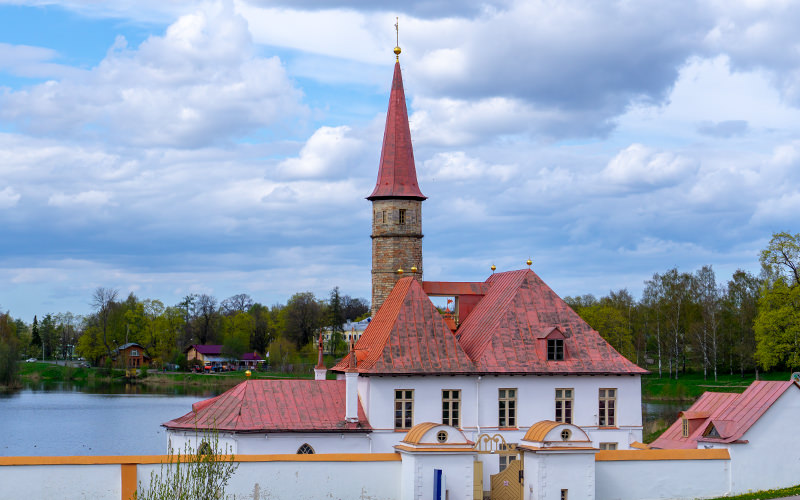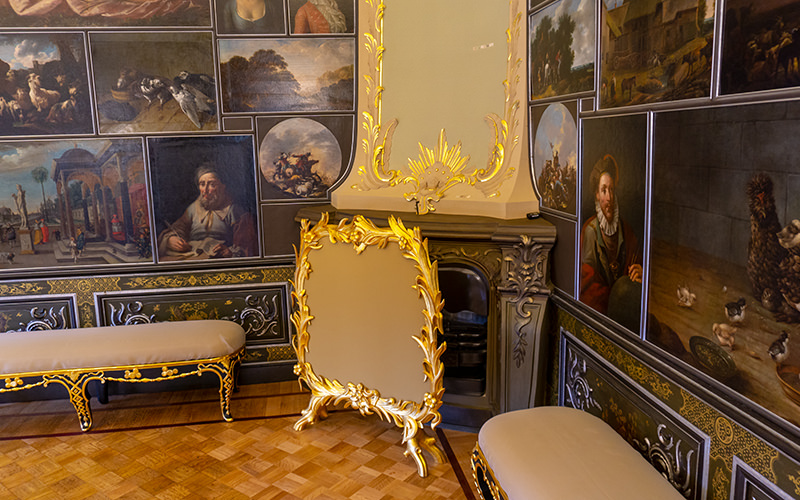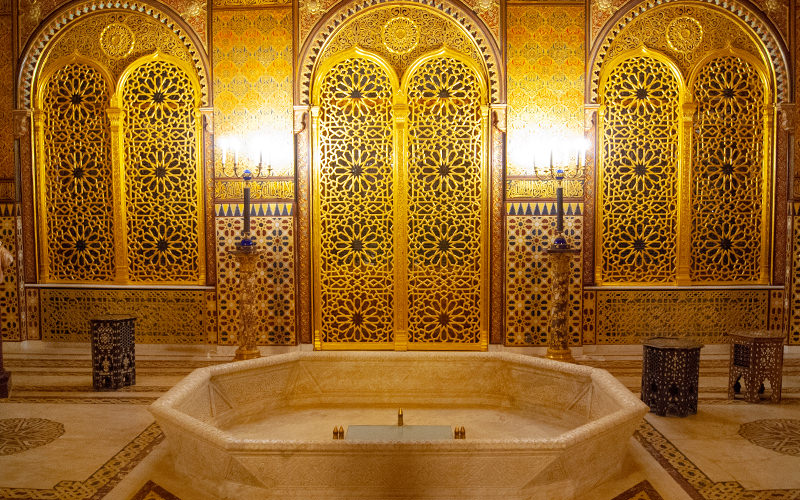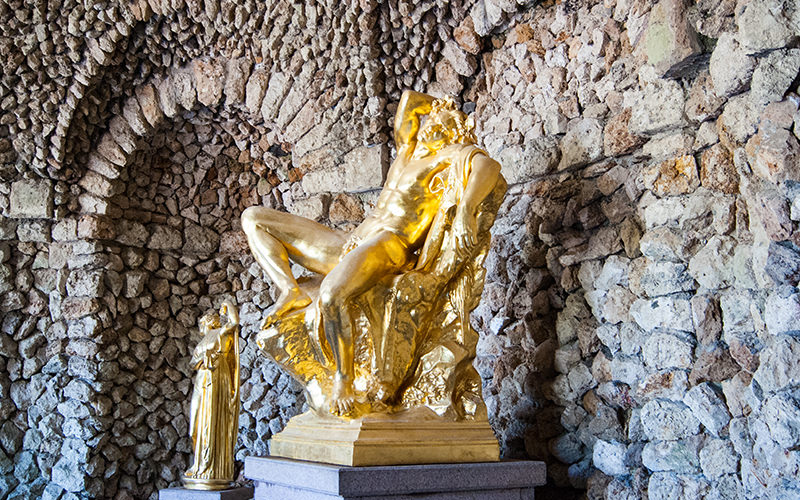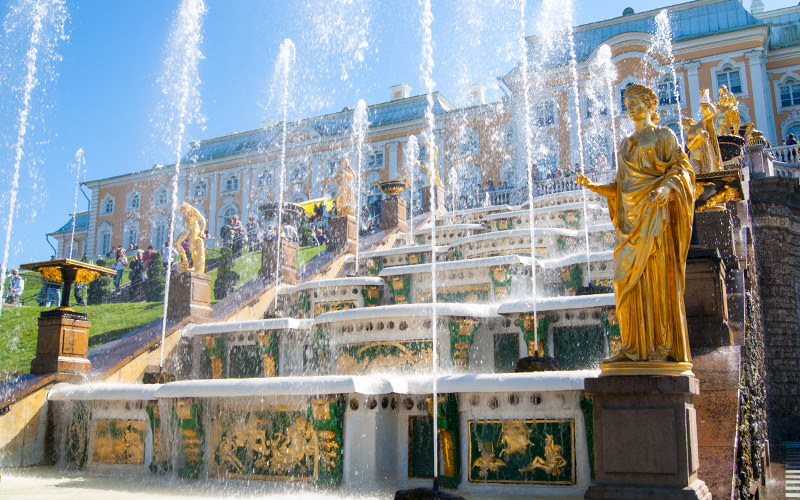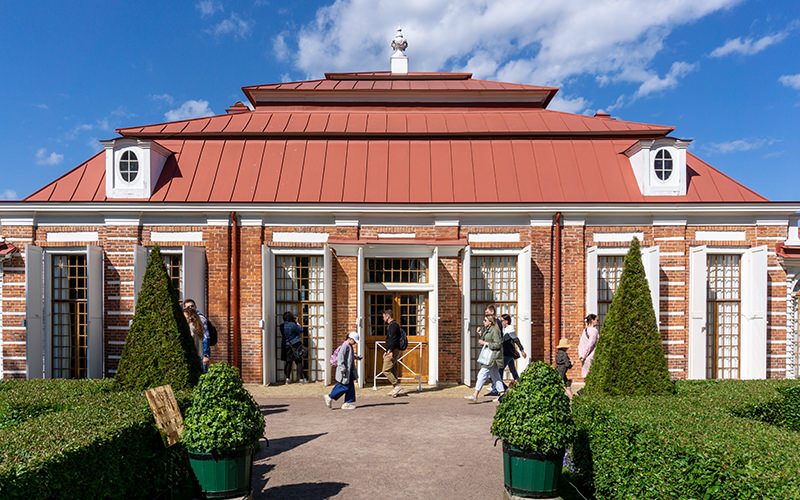The Grand Palace in Peterhof is an outstanding architectural monument, captivating with the splendor of its interiors and rich history. Built between 1714 and 1752, it barely survived the Great Patriotic War, having been almost completely destroyed and rising from the ashes like a phoenix. The Grand Palace is the centerpiece of the entire ensemble, with fountains and the upper garden oriented around its central part.
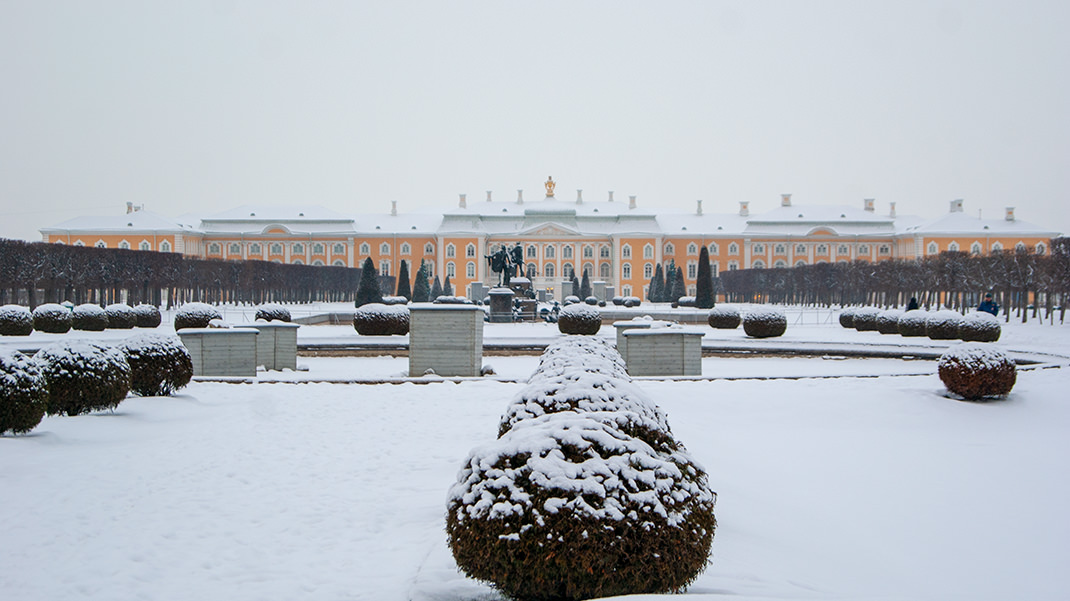
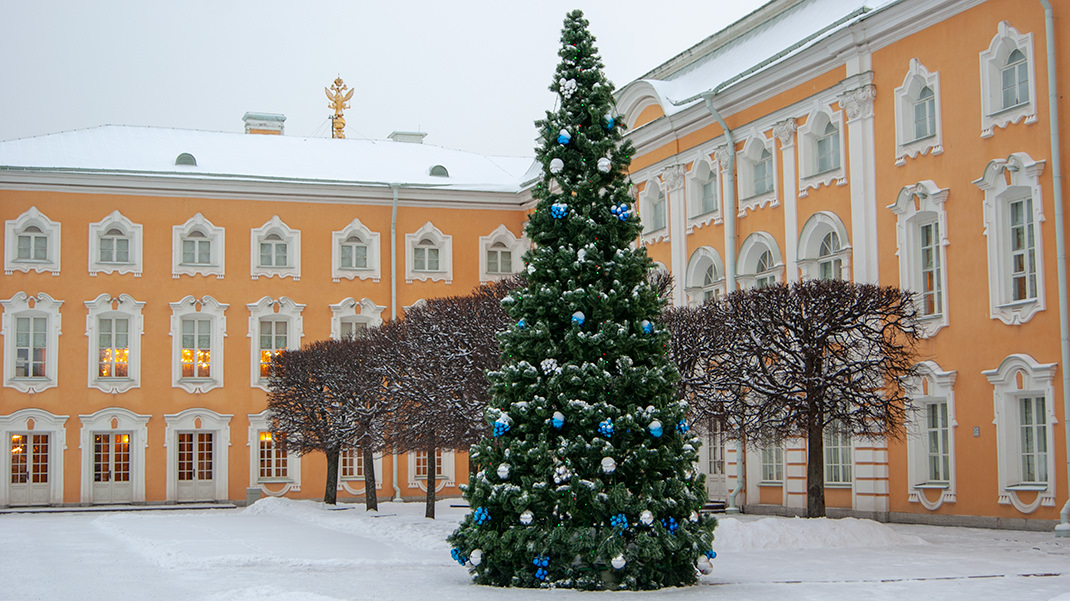
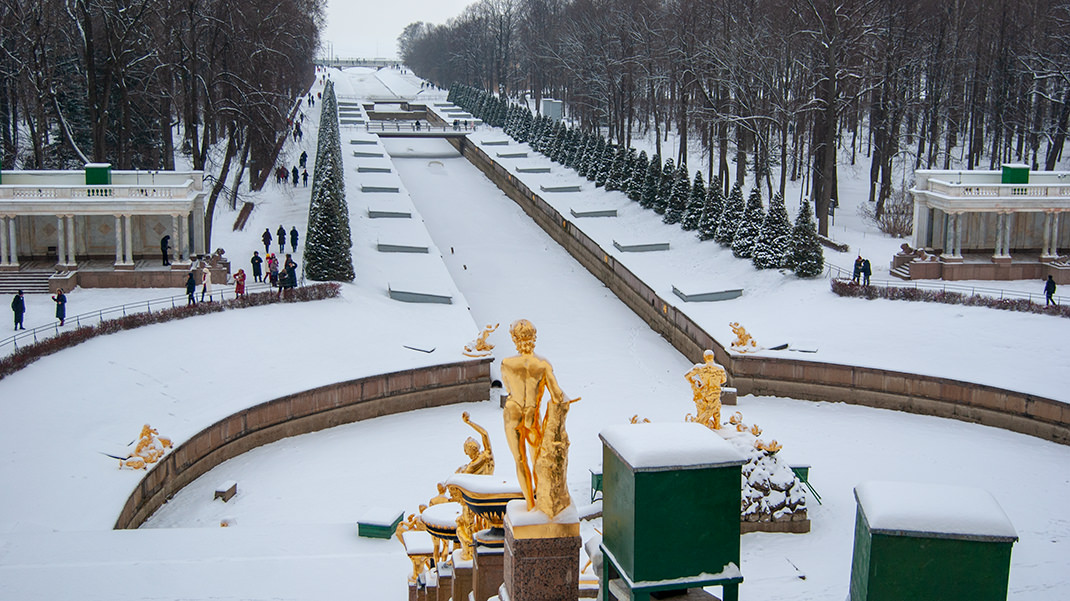
How to Get There
• From Metro Station "Avtovo": minibuses T-224, T-300, T-424; buses No. 200, No. 210.
• From Metro Station "Leninsky Prospekt": minibuses T-103, T-420.
• From Metro Station "Prospekt Veteranov": minibuses T-343, T-639B.
• From Baltic Railway Station: take a train to the "Novy Peterhof" or "Oranienbaum" station; from the station in Novy Peterhof, it’s a 10-minute bus ride on buses No. 344, No. 348, No. 350, No. 351, No. 352, No. 355, No. 356.
If you plan to take a minibus, keep in mind that in winter, there are fewer tourists traveling to Peterhof, and the driver might not announce the stop at the palace. Request this in advance or track your location on online maps.
Tour
We decided to visit the palace in winter because it’s better to stroll through the grand park in summer, and there are fewer people. After buying the ticket, you need to wait for the tour group to assemble. We were lucky, and due to the small number of visitors, the tour was conducted for just the three of us. It’s very convenient that the guide speaks into a microphone and everything is transmitted through special headphones, making it easy to hear.
We start the tour with the grand staircase, which is meant to showcase the splendor of the palace. Gilded figures, marble—everything hints at the grandeur of the Russian Empire. From the staircase, we enter the ballroom, perhaps the most grandiose of all the palace rooms. The walls are decorated with gilded bas-reliefs, and the space is expanded by mirrors. Once, high-society balls were held here.
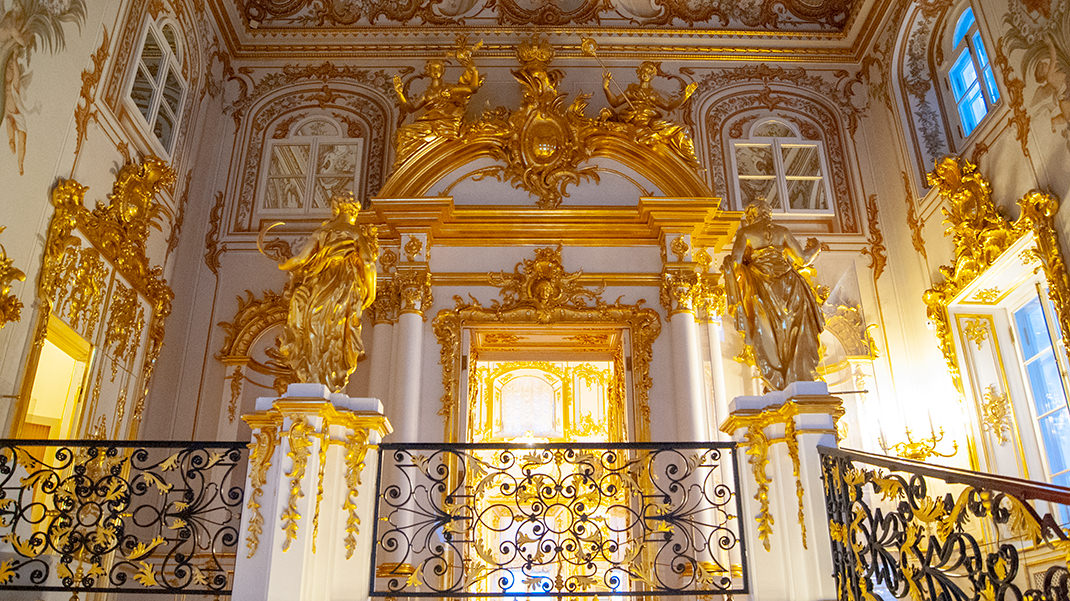
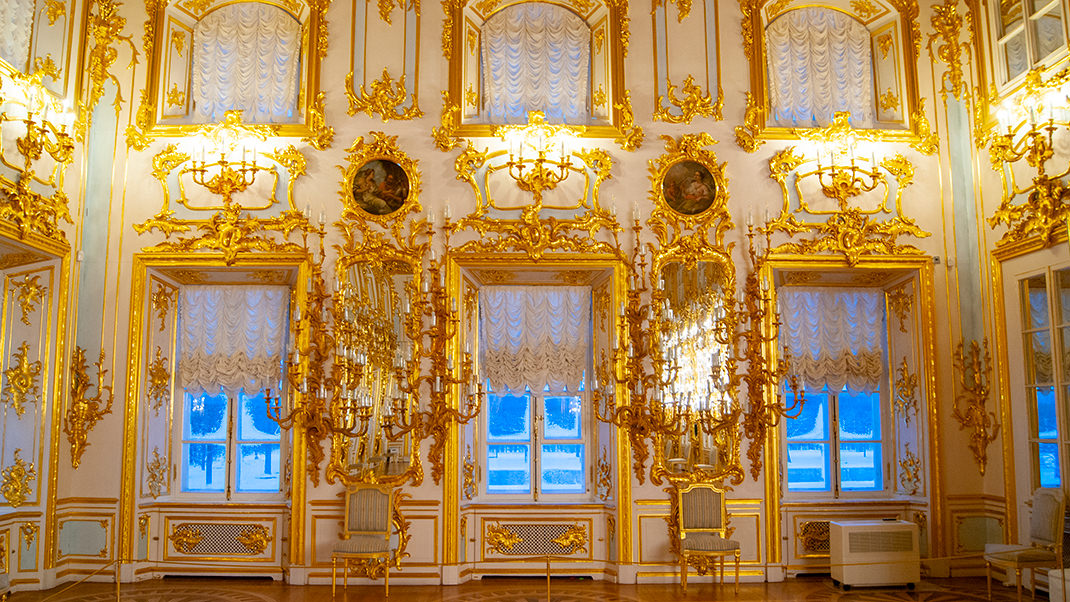
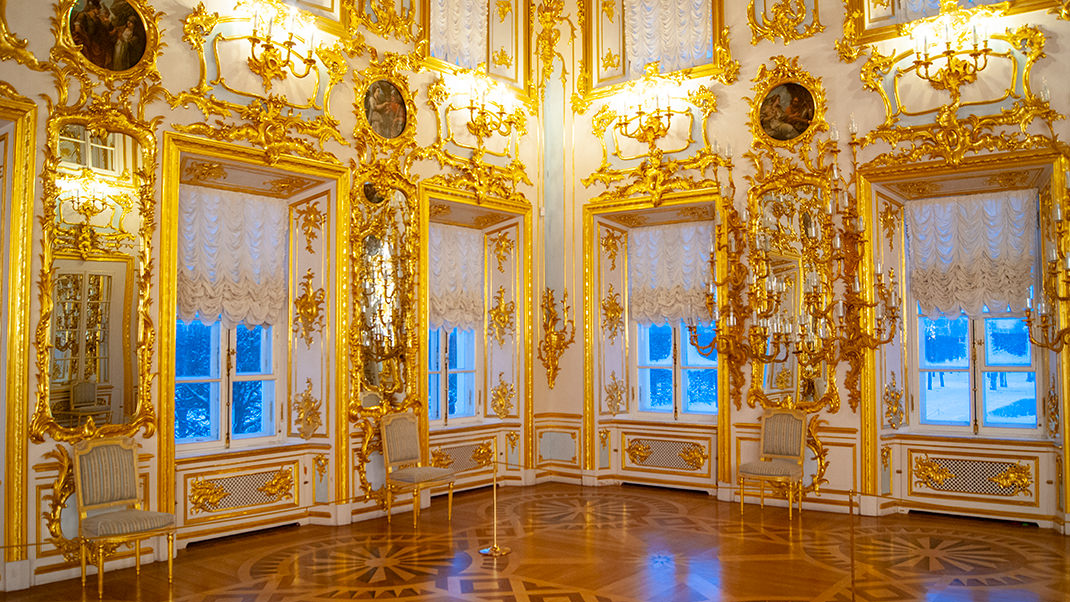
We continue on and enter the Chesme Hall. Its walls are adorned with paintings dedicated to the Battle of Chesme, where a decisive victory was won in the Russo-Turkish War. The paintings were created by Jakob Hackert. To accurately depict the naval battle, the frigate "Saint Barbara" was deliberately exploded. Adjacent to the hall is the Blue Reception Room, which served as an office. Here, chronicles of the palace were kept.
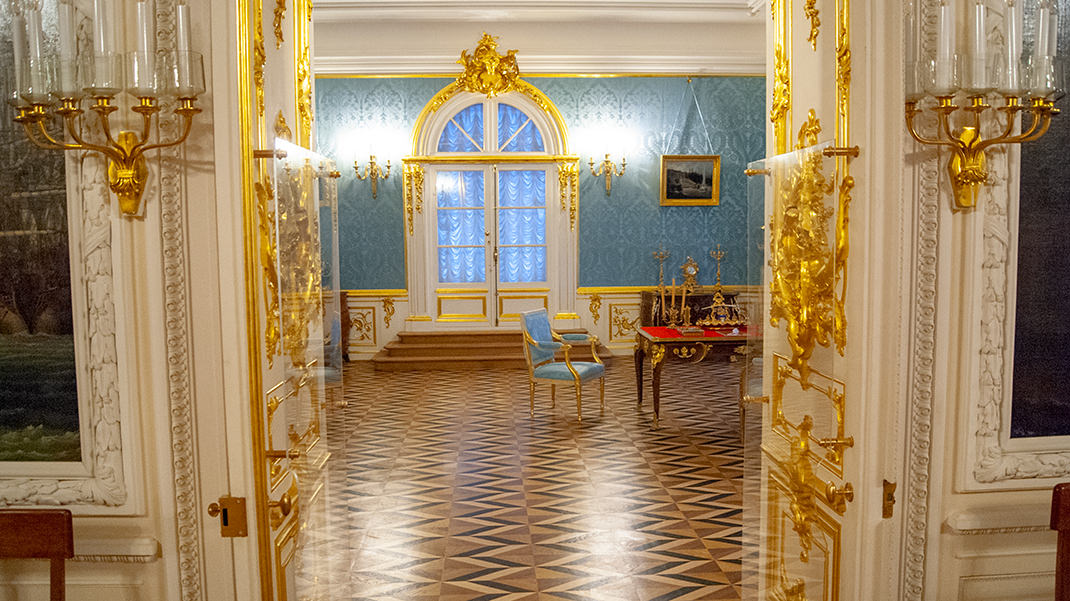
Moving further, we arrive at the Throne Room. The main decorative elements are paintings of the descendants of Peter I. Dominating is a portrait of Catherine II on horseback entering Peterhof. It is said to be the most realistic depiction of her. The entire interior emphasizes Catherine II's succession to the Russian throne.
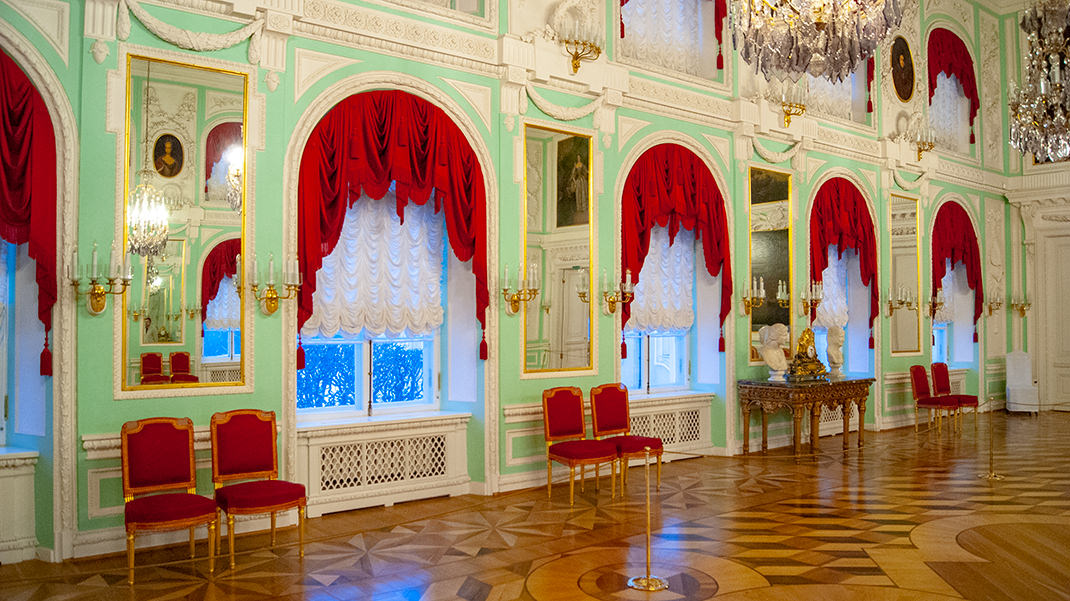
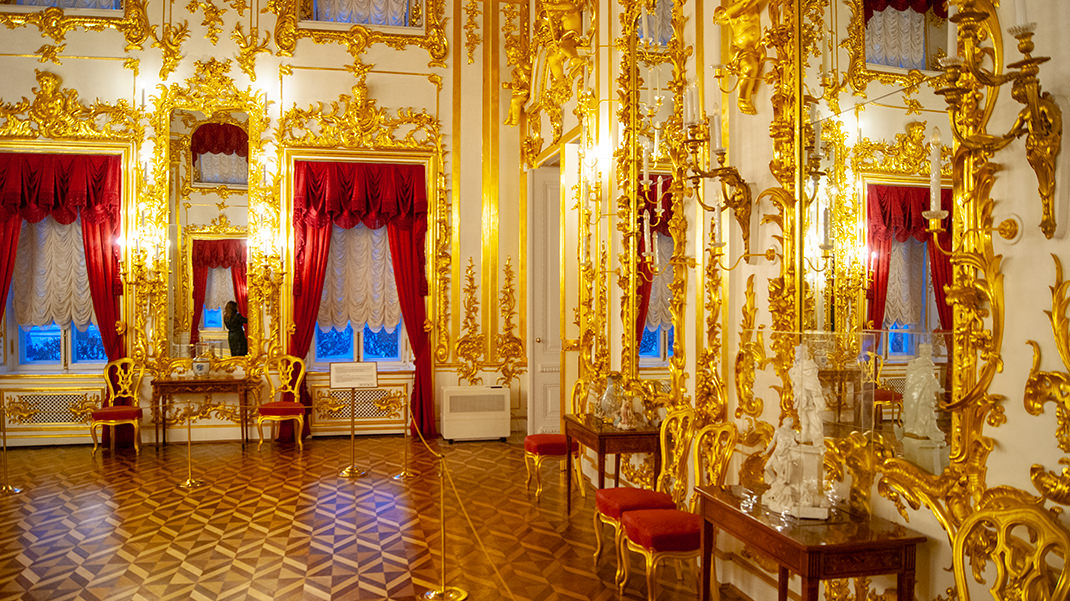
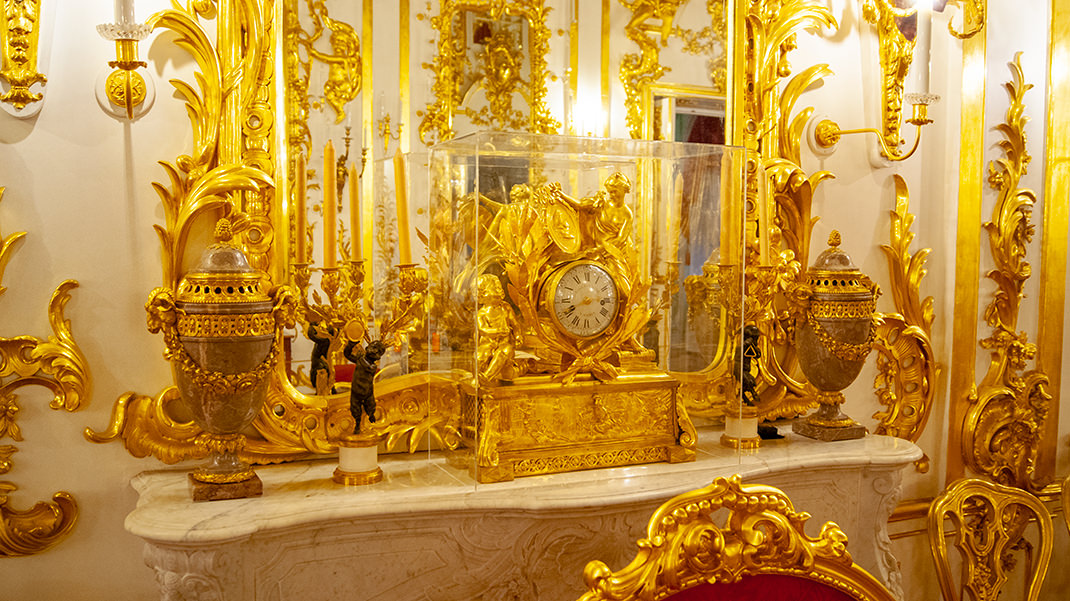
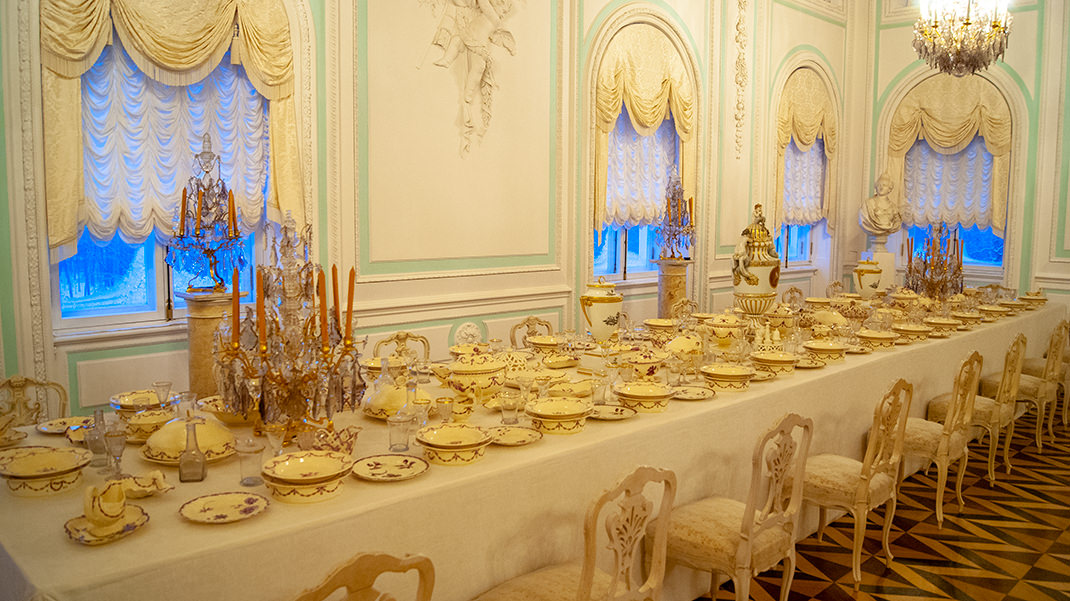
Several more rooms follow; we won’t go into detail about all of them, but we’ll mention a few. Notably, all of them are through rooms.
The Picture Gallery deserves attention. It was the main room in Peter's palace, offering a view of the "Samson" fountain and the central axis of the Upper Park. We were also interested in the Chinese-style rooms. They reflect the architects' view of China during a period of fascination with the East, although they don't quite match reality.
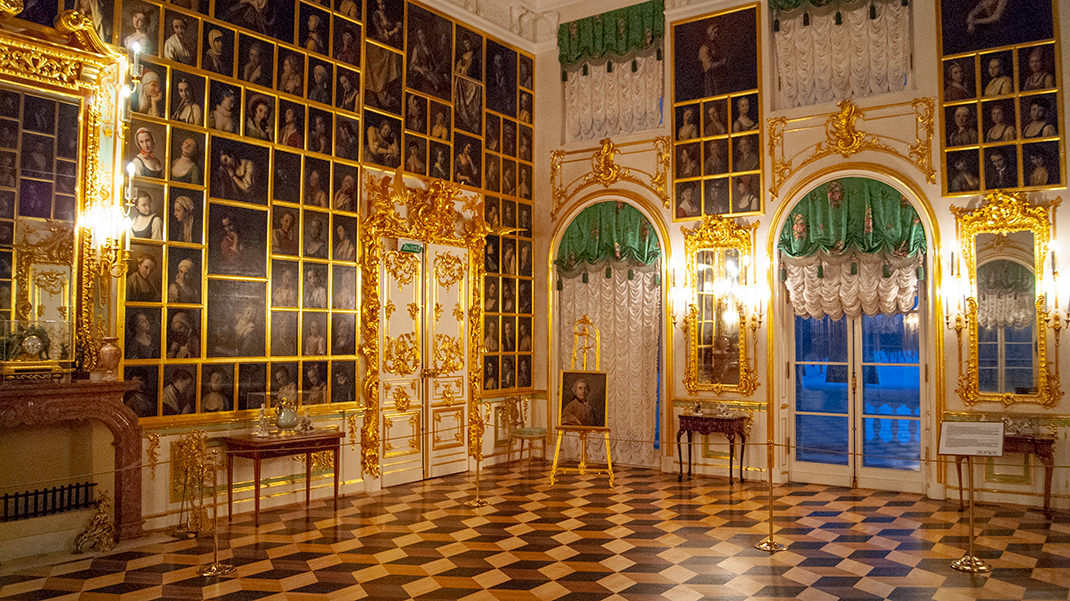
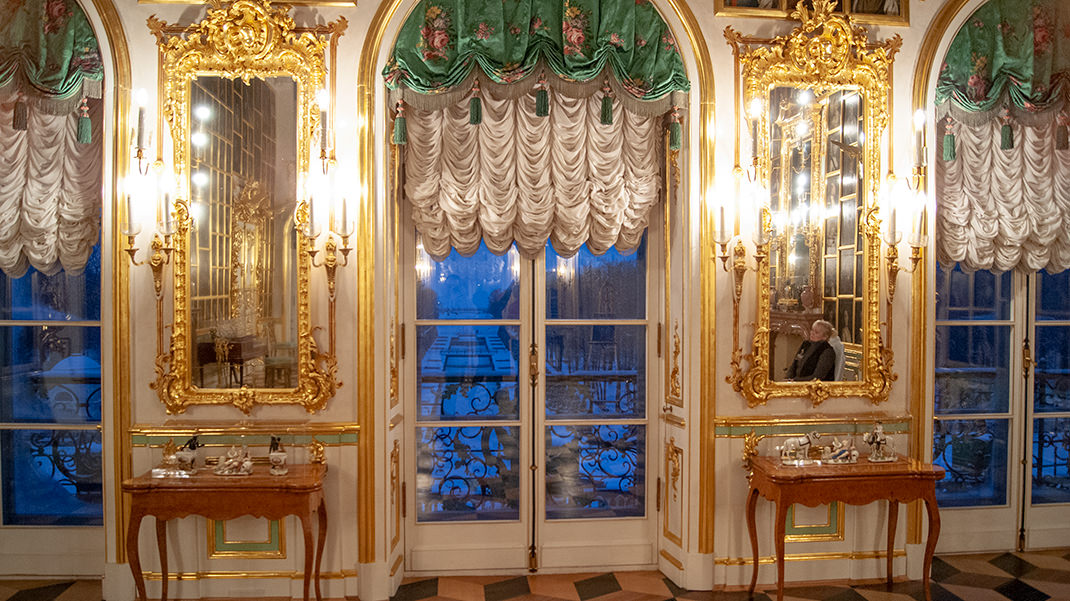
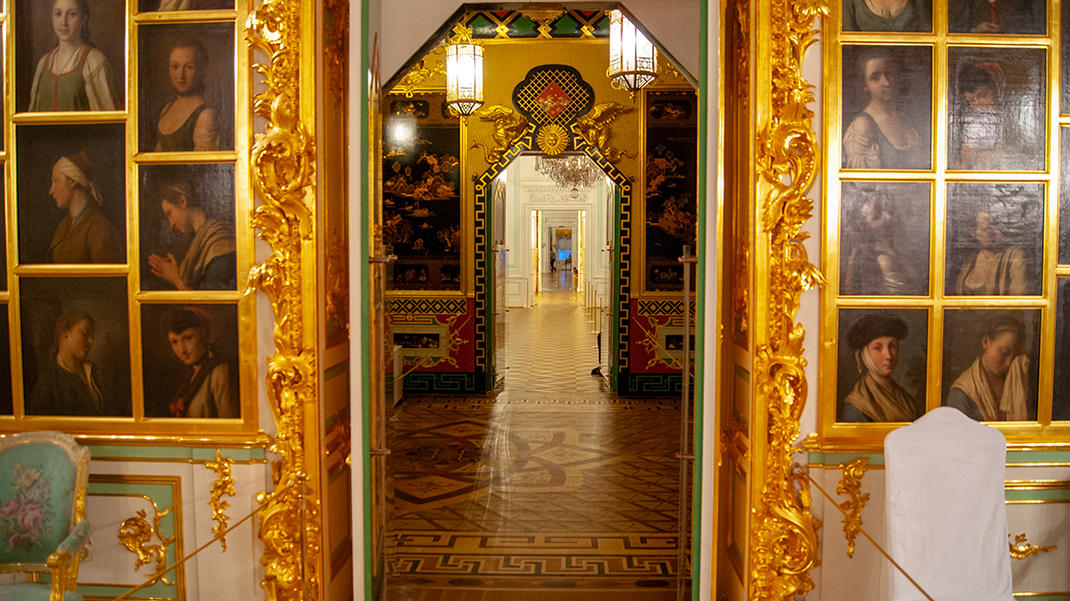
The White Drawing Room stands out, executed in a classical style. Its strict interior is markedly different from the other rooms, and it lacks paintings entirely. On a huge table sits a service for many people. It gives the impression that the lamps on the candelabras will soon turn into lit candles and a ball in honor of the empress will begin.
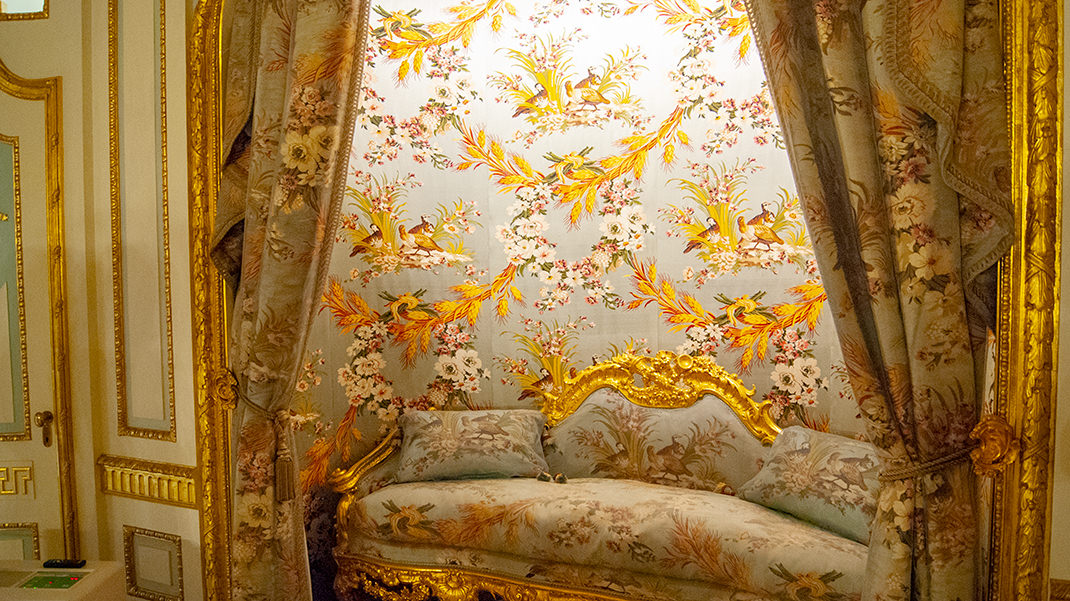
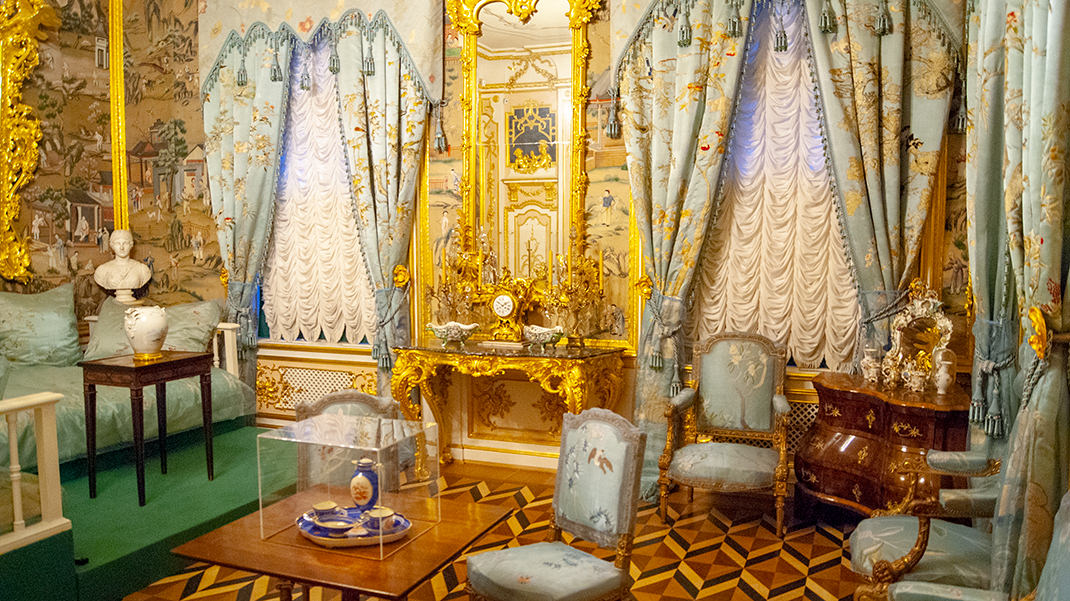
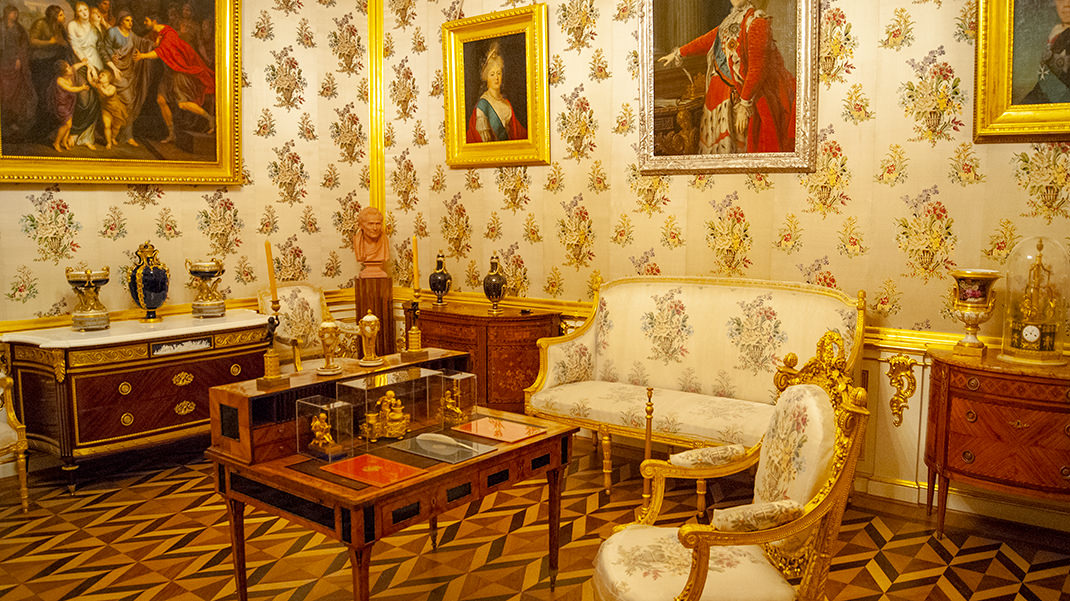

After visiting a few more rooms, we reach the White Hall through the Great Blue Drawing Room, where during our visit, there was an exhibition titled “Dutch House: The Dreams of Peter the Great.” The exhibition featured both traditional and interactive exhibits. For example, you can lie on a bed and watch Peter’s dreams projected onto a canopy—a mesmerizing sight. We also liked the porcelain tulips, which are indistinguishable from real ones, though photography was prohibited.
The tour ends in the Oak Study—the oldest interior of the palace, which the Romanovs made an effort to preserve. The decor includes oak panels, some of which are original 18th-century pieces.
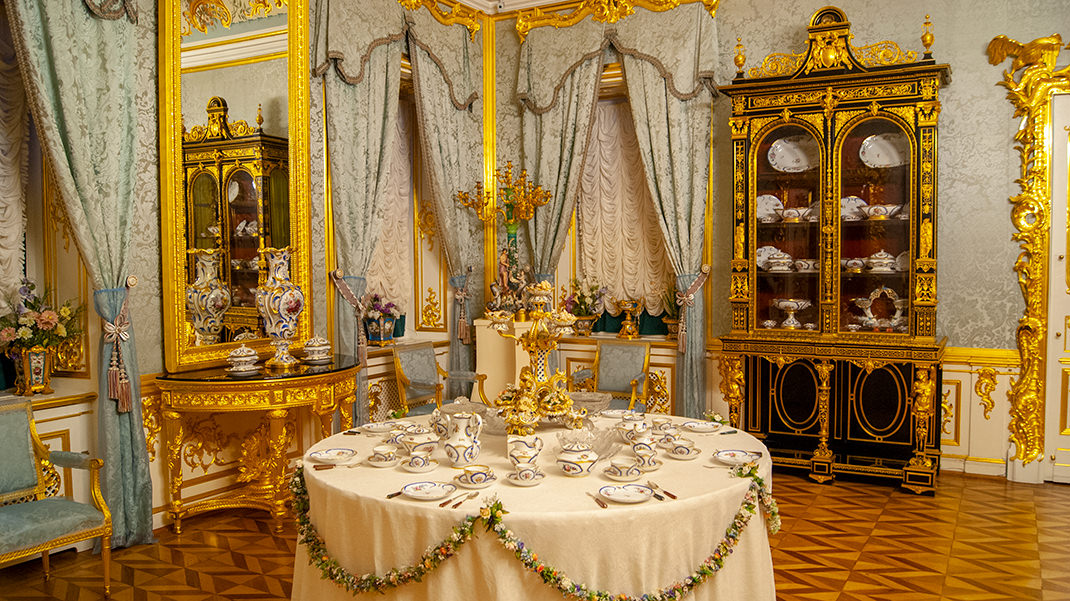
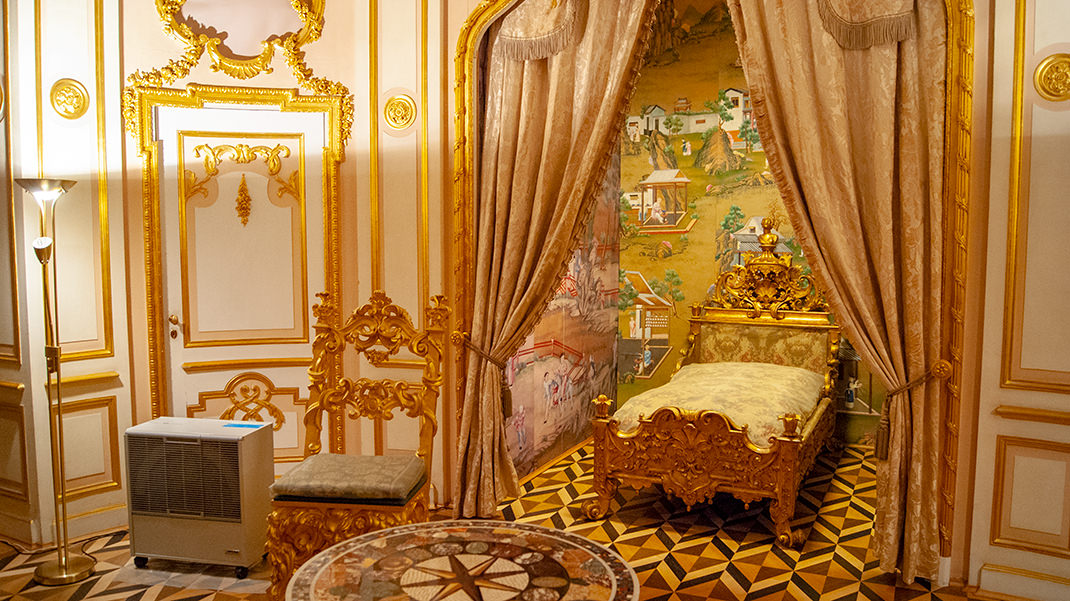
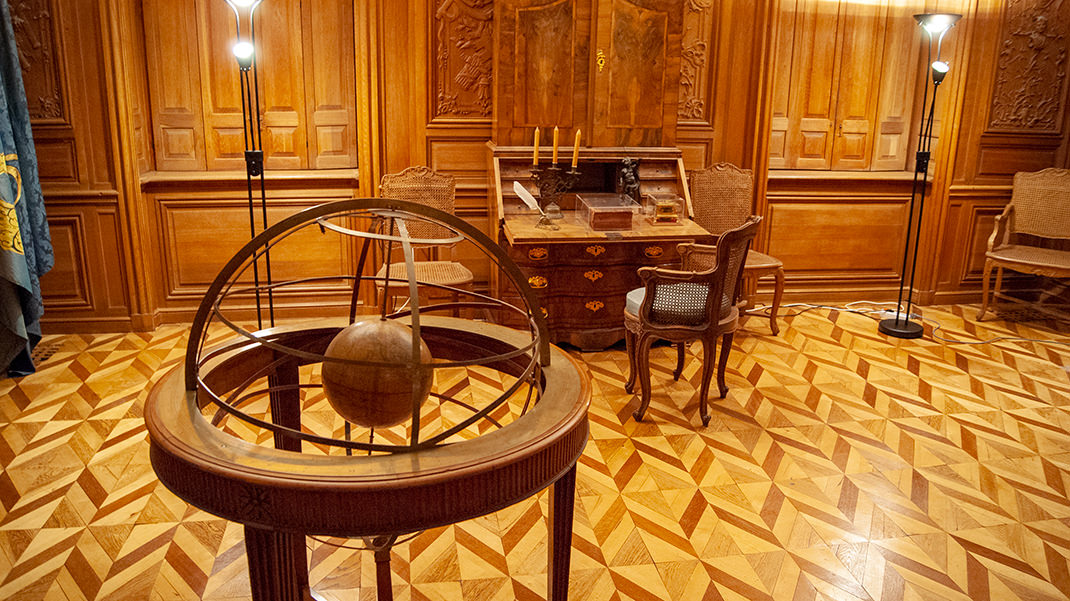
The tour concludes here. If you don’t have time for a trip to the suburban residences, you can visit the Menshikov Palace on Vasilyevsky Island or the Mikhailovsky Castle, also located in the city center.
In summary:
- Probably the most famous palace in St. Petersburg and its surroundings;
- Magnificent interiors;
- Best visited with a tour to learn more about the history of Peterhof and the Romanov family.


